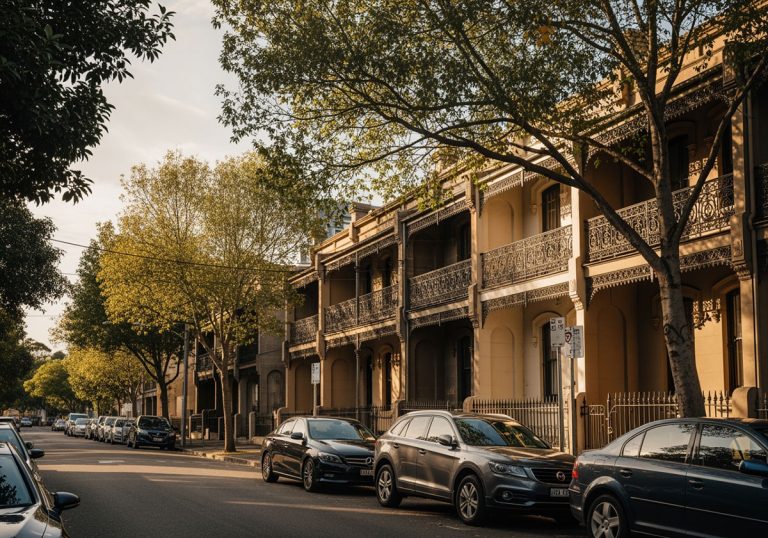The property market is often described as cyclical, moving through predictable phases of price rises and corrections influenced by broader economic forces. Understanding these market cycles is crucial for timing purchases to maximise capital growth, particularly in a dynamic market such as Sydney, where macroeconomic shifts and localised trends combine to shape performance.
At Buyer’s Domain, as professional buyers’ agents based in Sydney’s Inner West, we guide clients through these complex cycles, identifying optimal entry points and high-performing suburbs poised for growth.
The Four Phases of the Property Cycle
According to economic and lending analyses from institutions such as Canstar and Citadel, Australia’s property market progresses through four primary phases: boom, downturn, stabilisation, and upturn. Understanding the characteristics of each phase enables buyers to recognise market conditions and act strategically.
1. Boom Phase: Rapid Growth Period
This stage is marked by:
- Accelerated price growth—often exceeding 20% annually in high-demand urban markets.
- Low interest rates and strong consumer confidence.
- High investor activity and widespread fear of missing out (FOMO).
During this period, developers flood the market with new projects, and competition drives property prices to record-breaking highs.
Caution: While booms appear attractive, entering the market at this apex increases the risk of short-term correction and reduced yields.
In Sydney, the last major boom occurred between 2020 and 2021, driven by interest rate cuts, constrained housing supply and different lifestyle choices during the pandemic. Prices then corrected through 2022, before recovering across 2024–2025.
2. Downturn Phase: Market Correction
Following the peak, the market typically softens as oversupply and higher lending costs cool demand.
- Prices plateau or decline by up to 10–15%.
- Vacancy rates rise as rental property supply outpaces demand.
- Emotional selling replaces FOMO with caution.
Historically, downturns are triggered by interest rate hikes, as borrowing costs limit affordability. For instance, the 2022–2023 downturn in Sydney was largely attributed to aggressive rate rises introduced to curb inflation, resulting in nominal value declines before rates stabilised in 2024.
3. Stabilisation Phase: Balanced Market
This phase represents equilibrium between buyer demand and stock availability. Prices flatten as confidence rebuilds and market participants adjust to new conditions.
- Transaction volumes recover gradually.
- Interest rates begin to stabilise or fall.
- Emotional volatility subsides.
Today, as of late 2025, Sydney is broadly considered in the stabilisation-to-upturn transition.
Recent data from CoreLogic and major banks indicates modest yet steady growth, with Sydney dwelling prices rising 3–4.6% over 2025, supported by improved buyer confidence following rate cuts from the Reserve Bank of Australia (RBA). This suggests that the current stage of the cycle offers significant upside for patient investors and owner-occupiers seeking long-term capital growth.
4. Upturn Phase: Recovery and Expansion
The upturn phase marks the renewal of steady capital growth, characterised by:
- Increasing buyer confidence.
- Rising rents and falling vacancy rates.
- Gradual appreciation in asset values as affordability improves.
This stage is the ideal entry point for strategic buyers looking to purchase before the next expansionary upswing. By acquiring property early in the recovery cycle, buyers position themselves to benefit as momentum accelerates.
KPMG has predicted further price recovery into 2026, with Sydney expected to record 4% median house price growth year-on-year once additional rate cuts take effect whilst Domain has predicted this figure to be 7%.
Sydney’s 2025 Market Position
Sydney’s property cycle illustrates resilience and cyclicality more clearly than any other city in Australia. The current market—bolstered by improved borrowing capacity and continued population growth—is transitioning from stabilisation into early upturn.
Key indicators supporting the upturn include:
- Rising values: According to Domain, median Sydney house prices are up 4% over Q3 2025, marking consistent quarter-on-quarter gains.
- Falling interest rates: The RBA has reduced the cash rate to 60% as of August 2025, with the possibility of further cuts in 2026.
- Low supply: Residential construction remains below long-term averages, amplifying competition for quality assets.
- Increased investor participation: Both domestic and overseas investors are returning to the market as yields strengthen.
The data suggests that Sydney buyers entering the market during late 2025 and early 2026 are well-positioned to capitalise on cyclical recovery, particularly in established, supply-constrained suburbs.
Identifying the Right Time to Buy for Maximum Growth
Property success is less about “timing the market” and more about “time in the market”. However, recognising key market inflection points can substantially improve investment outcomes.
-
- Buy in the Stabilisation-to-Upturn Window
This phase provides access to motivated vendors, lower competition, and stable financing conditions—an environment suited to both homebuyers and investors seeking capital appreciation. Buying too early may lead to delayed returns, whereas entering at the late-upturn or early-boom phase risks overpaying. - Focus on Micro-Cycles
Property cycles within Sydney’s suburbs vary according to demographic change, infrastructure investment, and distance to employment hubs.
For example, Balmain, Annandale and Leichhardt often lead the Inner West recovery curve, while emerging areas such as Parramatta and Ryde are typically 6 to 12 months behind Inner West trends.
- Buy in the Stabilisation-to-Upturn Window
- Monitor Economic Signals
Interest rate policy remains the single most influential factor in cycle turning points. Historically, Sydney’s market accelerates within six months of early-stage rate cuts. The recent easing cycle aligned with renewed price momentum in mid-2025.
How Buyers’ Domain Guides Clients through Property Cycles
At Buyer’s Domain, we specialise in identifying the optimal time, location, and property type for purchase. Our detailed market analysis combines localised research with macroeconomic data to pinpoint value opportunities before they reach the broader market.
Our methodology includes:
- Comparative yield and capital growth forecasting based on recent data.
- Negotiation strategy tailored to current market leverage conditions (buyer vs seller advantage).
- Access to off-market properties in emerging market phases, ensuring early-cycle entry.
For investors and homebuyers alike, our approach translates cyclical awareness into measurable financial advantage.
Practical Tips for Buyers
- Observe Auction Clearance Rates – Consistent clearance above 70% often signals early-stage recovery.
- Analyse Days on Market Trends – Falling average days on market indicate increasing buyer competition.
- Track Mortgage Approvals – Growth in home loan commitments typically precedes price recovery phases.
- Invest Counter-Cyclically – Purchase when sentiment is subdued but fundamentals remain strong.
- Avoid Emotional Buying at Peak – Over-heated periods lead to inflated valuations and limited upside.
Conclusion: Strategic Buying for Sustainable Growth
Understanding where Sydney sits in its property cycle is essential to purchasing with confidence and foresight. With the city entering an early upturn in late 2025—driven by interest rate relief, tight supply, and consistent buyer confidence—strategic acquisitions now hold strong prospects for sustained capital growth.
At Buyer’s Domain, our expertise lies in aligning these insights with individual buyer objectives. Whether you are seeking to purchase your first home, upgrade to a family residence, or invest strategically, we ensure that every decision reflects both market timing and long-term value.
To explore strategic buying opportunities in Sydney’s evolving property market, connect with our team of experienced buyers’ agents.



